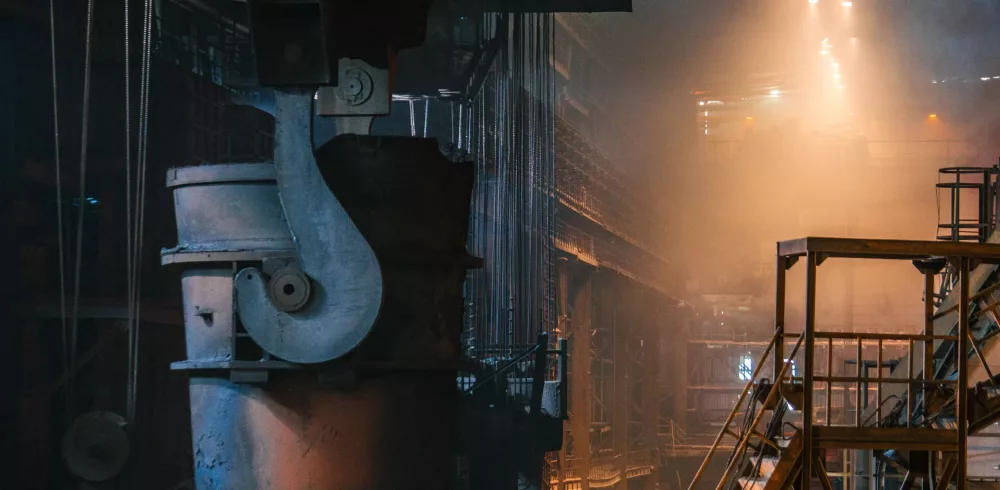In this article split over three parts, Dr Richard Brown from Finch Consulting looks at effective lighting at work and how it enables safe working. This first part discusses why effective lighting is required and how to effectively manage the health and safety risks from lighting in the workplace.
It is perhaps a matter of ‘common sense’ that effective lighting at work is required and enables safe working. However, common sense very often isn’t common, and this article sets out the legal requirements, good practice, associated hazards and some tips on lighting strategies. Dr Richard Brown, Head of Expert Services at Finch Consulting, muses over his experience with lighting over his well-established career.
The legal requirements are detailed at the end of this article and referred to throughout the body of it. The article does not discuss lighting requirements in explosive or potentially explosive atmospheres.
Why is effective lighting required?
Aside from the legal requirements, the following can be used to summarise why we light workplaces, and what can occur when this is not achieved.
It will enable everyone to quickly see/identify hazards and avoid them. Therefore, the types of hazards present at work therefore determine the lighting requirements to enable safe operation. Effective lighting will reduce eye strain for those working. When considering correct lighting levels, it is important in a workplace to evaluate the following:
• General lighting (communal areas – i.e., corridors),
• Task specific lighting and
• Emergency lighting (i.e., in the event of a fire (and power failure) sufficient emergency lighting for people to safely evacuate).
When lighting is not adequate this can this to accidents in the workplace resulting in costs to the business through:
• Time off work from injuries
• Increased absenteeism and
• Reduce staff productivity
Put simply effective lighting strategy will assist employers in providing a safe workplace for their employees and others who might be harmed, such as visitors, the public and contractors.
How to effectively manage the health and safety risks from lighting in the workplace? (Taken from HSG38).
The following can be applied to a design strategy (e.g., for new build or building modifications, maintenance shutdowns, or any building reviews. The consideration therefore of lighting as part of a risk based approach within the design of buildings and construction or maintenance work. The Construction (Design and Management) Regulations 2015 therefore should be utilised, and the roles of Principal Designer and Designer(s) should consider lighting. Equally lighting should be considered as part of accident or incident investigations, where improper lighting may have played a role in the injury or incident.
- Effective planning – reviewing your current arrangements for lighting in the workplace to ensure they are adequate and where not, set targets for improvement. Good practice would include reviewing your arrangements when making changes to the workplace (i.e., installation of new equipment, changing the use of a room, etc) to ensure that the lighting levels and positioning of the lights are not compromised.
- Organisation – ensuring that your organisation has sufficient ‘competent’ persons and appropriate equipment to ensure the review and maintenance of your lighting provisions. For example, are your lighting systems on a regular maintenance schedule and do you have enough competent people to undertake this regime? Furthermore, under the HASWA 74 employees are responsible for their own and others’ H&S, employees have a role to report lighting defects to the employer so these can be resolved as soon as possible.
- Controlling H&S – An organisation must be able to control their H&S risks by creating a set of standards (i.e., procedures, regimes, etc) to set the required frequencies and types of checks that must be completed within the organisation.
- Monitoring – Monitoring and reviewing of lighting is important as this will demonstrate to the organisation whether the lighting checks have been completed and to the required satisfactory standard. The monitoring should also include reviewing the effectiveness of lighting within the organisation to include the planning, organisation, control, and monitoring regimes in place, and where necessary making improvements. Records of such monitoring and the outcomes should be recorded.
- Risk Assessment – Workplaces must assess possible risks in the workplace (MHSWR 1999) which includes lighting risks to ensure that lighting levels do not pose a risk to staff or others using the working environment. As with all risk assessments where a significant risk has been identified then the Hierarchy of Controls must be following to remove, reduce or control the risk so far as reasonably practicable.
To read parts two and three please go to finch-consulting.com/insights-and-articles/
Manufacturing & Engineering Magazine | The Home of Manufacturing Industry News















